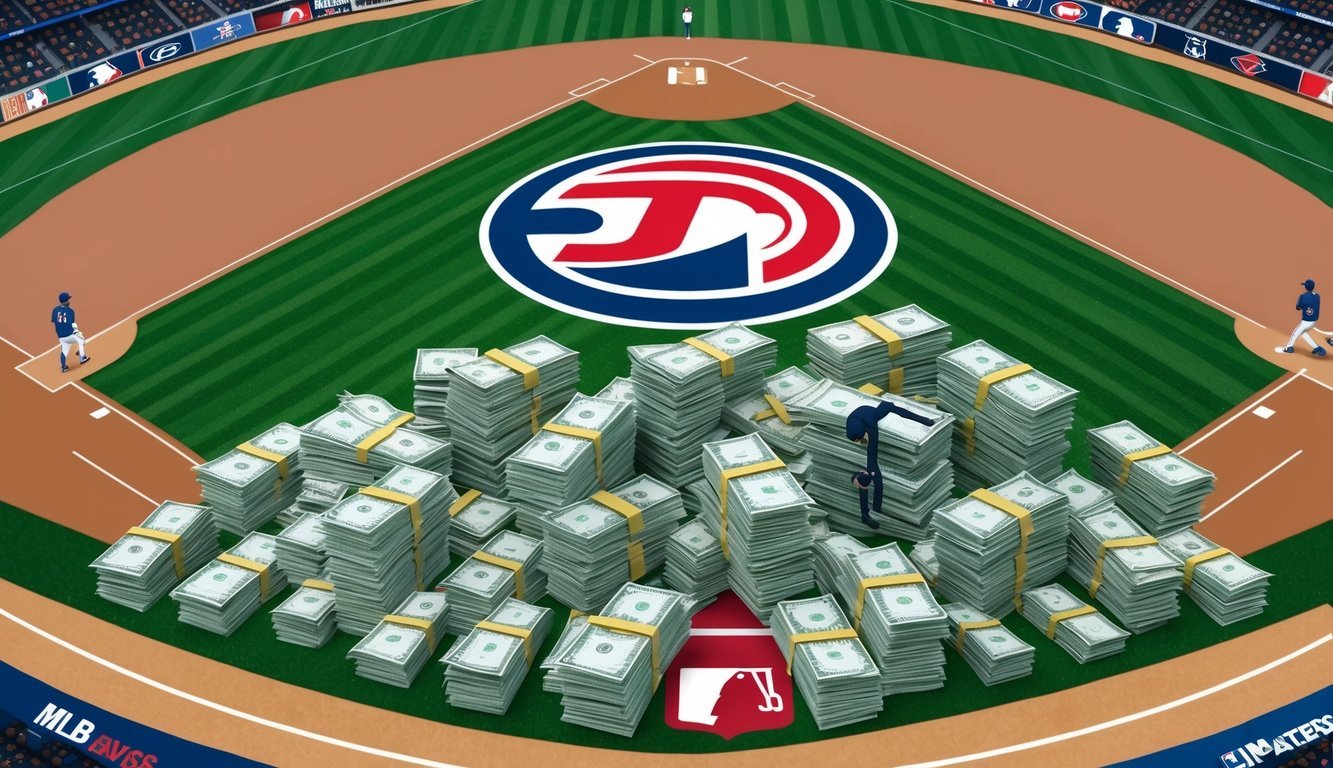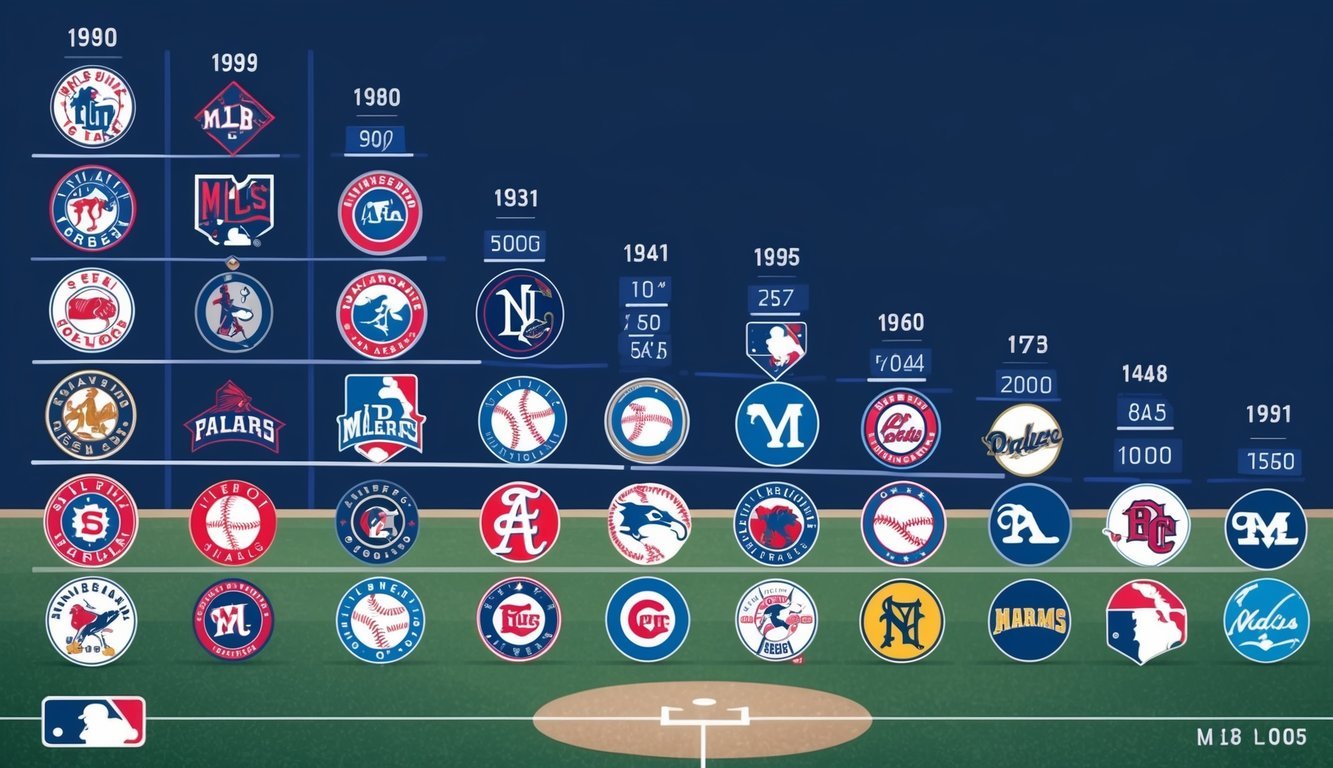Baseball fans always love to debate who’s the best player, but there’s no argument when it comes to the highest-paid stars in 2024.
Shohei Ohtani has shattered records with his massive contract, cementing his place atop the salary rankings.
The two-way phenom inked a staggering 10-year, $700 million deal with the Los Angeles Dodgers, making him the highest-paid player in MLB history.
Ohtani’s contract dwarfs those of his peers, but other elite players still command eye-popping salaries.
Justin Verlander and Max Scherzer share second place, each earning $43.3 million annually.
The top 25 highest-paid list features a mix of dominant pitchers and sluggers, showcasing the premium teams place on elite talent.
While current contracts set new benchmarks, it’s worth noting how rapidly salaries have escalated in recent years.
Mike Trout’s previous record deal seems almost quaint compared to Ohtani’s. As revenues grow and the game evolves, it’s exciting to imagine what future contracts might look like for baseball’s brightest stars.
The Current Highest Paid MLB Player
Shohei Ohtani recently signed a massive contract with the Los Angeles Dodgers, making him the highest-paid player in Major League Baseball history.
His groundbreaking deal has set new standards for player salaries in the sport.
Profile of the Player
Shohei Ohtani is a unique talent in baseball, excelling as both a pitcher and hitter.
The Japanese superstar joined the Dodgers in 2024 after spending his first six MLB seasons with the Los Angeles Angels.
Ohtani’s two-way abilities have drawn comparisons to Babe Ruth, making him one of the most exciting players to watch.
His new contract with the Dodgers is worth $700 million over 10 years.
This deal shatters previous MLB salary records.
Ohtani’s annual average value of $70 million per year is unprecedented in baseball and all of North American sports.
Historical Salary Comparisons
Before Ohtani’s record-breaking contract, Mike Trout held the title for the largest overall deal in MLB history.
Trout signed a 12-year, $426 million extension with the Angels in 2019.
This contract was considered groundbreaking at the time.
Other notable high-salary players in recent years include:
- Max Scherzer: $59.3 million in 2022 (highest single-season salary)
- Trevor Bauer: $40 million in 2021
Ohtani’s $70 million average annual value dwarfs these previous highs.
His deal represents a significant leap in player compensation and could pave the way for even larger contracts in the future.
Components of an MLB Player’s Contract
MLB contracts encompass various elements that determine a player’s compensation and tenure with a team.
These agreements often involve complex structures and significant financial commitments.
Base Salary and Bonuses
The base salary forms the core of a player’s earnings, providing a guaranteed annual income.
This amount can vary widely, from league minimum to tens of millions for star players.
Performance bonuses offer additional income opportunities, rewarding achievements like All-Star selections or MVP awards.
Some contracts include signing bonuses, paid upfront when a player joins a new team.
These can be substantial, sometimes spread over several years for tax purposes.
Incentive clauses may boost earnings for reaching specific statistical milestones or playing time thresholds.
Contract Length and Options
MLB contracts typically span multiple years, offering financial security to players.
The average annual value (AAV) is a key metric, calculated by dividing the total contract value by its duration.
This figure is used for luxury tax calculations.
Team options allow clubs to extend a contract for additional seasons, often with predetermined salaries.
Player options give athletes the choice to continue their contract or become free agents.
Opt-out clauses permit players to re-enter free agency before their contract expires, potentially seeking better deals.
Teams with the Highest Payrolls

Big-market MLB teams often lead the pack in player salaries, with some franchises consistently topping the payroll charts.
Financial strategies play a crucial role in team success, though high spending doesn’t always guarantee championships.
Big Market Teams’ Approach
The Los Angeles Dodgers have become synonymous with big spending in recent years.
For the 2024 season, they made headlines by signing Shohei Ohtani to a massive contract.
The New York Yankees, another financial powerhouse, consistently maintain one of the highest payrolls in baseball.
The New York Mets, under new ownership, have also joined the high-spenders club.
They opened the 2024 season with the highest payroll at $305. 6 million.
The Los Angeles Angels have invested heavily in star power, though their on-field results haven’t always matched their financial output.
Meanwhile, the San Francisco Giants players have also been part of the league’s aggressive spending trends, as the team looks to regain championship contention.
Their front office has strategically allocated resources to bolster both pitching and offensive depth.
With several franchises committing to massive payrolls, the competition for top talent has become fiercer than ever.
Financial Strategies and Team Success
High payrolls can provide teams with star talent, but smart spending is key.
The Dodgers have balanced big contracts with a strong farm system.
The Yankees have used their financial muscle to retain homegrown stars and attract free agents.
The Mets’ strategy involves investing in elite pitching and offensive firepower.
Despite their spending, the Angels have struggled to build a consistent contender around their stars.
Teams must consider long-term financial flexibility when structuring contracts.
Luxury tax thresholds impact spending decisions.
Some clubs aim to reset penalties by occasionally dipping below the threshold.
Balancing high salaries with affordable young talent is crucial for sustained success in MLB.
Impact of High Earnings on Player Performance

High salaries in Major League Baseball can significantly influence a player’s on-field performance.
The pressure to live up to lucrative contracts often shapes both public expectations and a player’s mindset.
Expectations and Pressures
When players sign big contracts, fans and team management expect exceptional results.
This can lead to increased scrutiny of every at-bat or pitch.
For example, a pitcher with a $40 million salary might feel compelled to strike out more batters or maintain a lower ERA.
The media spotlight intensifies on high-earners too.
A slump or injury can quickly become headline news, adding mental stress.
Some players thrive under this pressure, using it as motivation to improve their game.
Others may struggle with the weight of expectations, potentially affecting their performance.
Performance Metrics and Valuation
Teams use advanced statistics like WAR (Wins Above Replacement) to measure a player’s value.
High-paid players are expected to post strong WAR numbers to justify their salaries.
A player’s performance can impact their trade value and future earning potential.
Awards like the Cy Young and American League MVP often correlate with high salaries.
Winning these accolades can lead to even bigger contracts.
However, performance doesn’t always match pay.
Some highly paid players may underperform, while others on smaller contracts might exceed expectations.
Baseball’s long season allows for performance fluctuations.
A slow start by a top earner might be overlooked if they finish strong.
Teams often factor in consistency and long-term value when offering large contracts to star players.
Evolution of Salaries in MLB History

Major League Baseball salaries have skyrocketed over the decades, reflecting changes in the sport’s economics and player value.
The trajectory from modest earnings to multi-million dollar contracts reveals baseball’s transformation into a big-money enterprise.
Inflation and Market Changes
In 1874, Ross Barnes earned $2,000 as baseball’s highest-paid player.
This figure seems quaint compared to today’s mammoth contracts.
Free agency, introduced in 1976, revolutionized player compensation.
It allowed athletes to negotiate with multiple teams, driving up salaries.
Television revenues further boosted player earnings.
As networks paid more for broadcast rights, teams had deeper pockets to attract talent.
The advent of cable sports networks in the 1980s and 1990s injected even more money into the sport.
By 2000, Kevin Brown’s $15 million salary set a new benchmark.
This was over 7,000 times what Barnes earned in 1874, even before accounting for inflation.
Historic Contracts and Their Legacies
Alex Rodriguez’s $252 million, 10-year deal with the Texas Rangers in 2000 shattered records.
It highlighted the premium that teams place on superstar talent.
Later, Rodriguez signed an even larger contract with the Yankees, earning $28 million in 2013.
Mike Trout’s 12-year, $426 million extension with the Angels in 2019 raised the bar further.
It showcased the value teams place on retaining generational talents.
Shohei Ohtani’s recent 10-year, $700 million agreement with the Dodgers set a new standard.
This unprecedented deal reflects Ohtani’s unique two-way abilities and marketing appeal.
These contracts have reshaped expectations for top players.
They’ve also sparked debates about salary disparity within the sport and the financial health of smaller-market teams.
